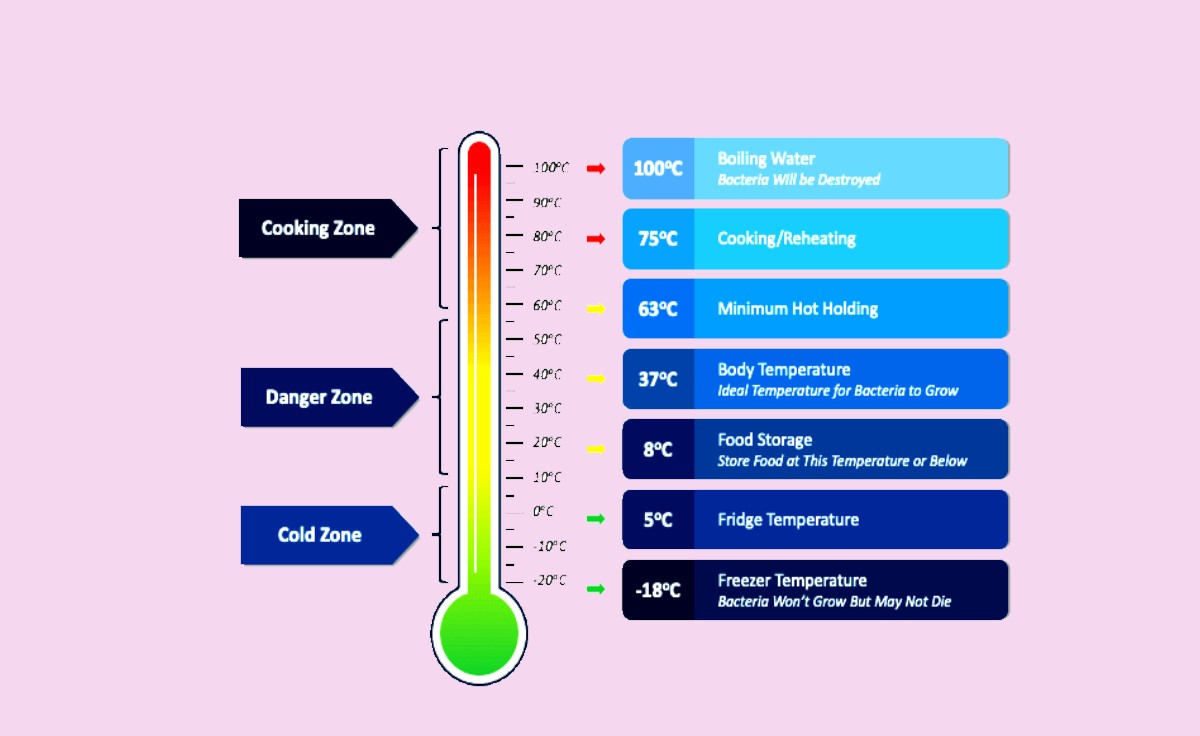A Detailed Guide on the Best Temperatures for Refrigerators and Freezer Appliances: (How to Measure, Keep Cool and Reset Temperatures).
Refrigerators and freezers are miraculous weapons against rotting and misuse of food. With different models and structures, all refrigerators and freezers perform a similar task of keeping food at low temperatures. The temperatures inhibit bacteria breeding, keeping the people free from foodborne diseases. These appliances store food in good condition as per your cooking schedule.
Refrigerator Temperature
Approximately 37°F (3°C) is the average temperature for a refrigerator. An acceptable temperature range of 33–40°F (0–4°C) is suitable for most uses. Foodstuffs can become frozen at temperatures around 33°F, whereas food damage can occur at temperatures around or above 40°F.
What’s the Best Refrigerator Temperature
The most recommended refrigerator temperature is 37 degrees Fahrenheit. The temperature hinders the growth of microorganisms, causing food-borne illnesses like listeria, salmonella, and E. However, too much temperature increases the growth of bacteria, also known as the danger zone (40 degrees to 140 degrees Fahrenheit).

What temperature should a Refrigerator be?
Maintaining a suitable refrigerator temperature will slow the growth of bacteria and prevent fresh food from spoiling, hence no room for foodborne diseases. Temperatures should range from 35 to 38 degrees Fahrenheit. The Food and Drug Administration (FDA) recommends refrigerator owners consider the following steps to prevent stomach troubles and save some amount;
- Quickly refrigerate perishable foods.
- Avoid leaving foods that need refrigeration for more than two hours at room temperature.
- For better working conditions, vary the refrigerator temperatures between 35 degrees to 38 degrees Fahrenheit.
What Temperatures should a Freezer be?
A freezer or a freezer compartment will ensure that fresh food lasts for weeks or more, depending on how you have planned your cooking schedule. That is, if the correct freezer temperature is maintained.
The proper Freezer temperature is “0” degrees Fahrenheit. A very low temperature would run up your utility bills and make your food lose flavor and moisture. More ice built up in the freezer would signify that the freezer has a very low temperature.
How to Measure an Accurate Temperature
Refrigerators not only have varied sizes but also have varied placement of thermometers. Some have digital thermometers, while others have adjustable numbers ranging from cold to coldest. The thermometers are located in the freezer or refrigerator, or both.
Even if your refrigerator or freezer has the best controls, it is wise to double-check the freezer temperatures using a separate thermometer. You can purchase a freestanding thermometer at any home store or online at a fair price.
Below are steps you can follow to measure the accurate temperature of your fridge;
- Insert the thermometer in a glass of water, place it in your refrigerator, and leave it for approximately 30 minutes.
- Remove the thermometer and carefully check the first thermometer readings immediately after you open the door.
- If the thermometer readings fail to align with the ideal refrigerator or freezer temperature, reset and measure again for accuracy
You can check the temperature of your freezer through the mentioned steps below;
- Use a bag of frozen vegetables by inserting your thermometer in it
- After approximately 8 hours, remove the thermometer and immediately check the readings
- Adjust the freezer temperatures if higher or lower than the ideal temperature
How to Keep Your Fridge and Freezer Cool
You can reduce frequent repairs by keeping your fridge and freezer temperatures cool.
Avoid opening the door frequently.
Opening the door of the freezer or fridge too much will alter the internal temperatures since cold air is let out and warm air intrudes.
Ensure you cool the food before storing it.
Hot food heats the temperature in the fridge or refrigerator quickly, leading to the rapid breeding of bacteria in the nutrition. Cooling the food before storage would maintain cool temperatures.
Fill up your appliance.
Keep your fridge and freezer full to maintain to ensure that your foods stay cool for a long period. This would limit the cold air from inducing warm pockets of air. However, a crowded fridge or freezer would cut down the airflow. Leave a small space open.
Ensure there are no leakages on the door seal.
A refrigerator is structured so that the gaskets around the door keep in cold temperatures and let out warm temperatures. A leak in the door seals causes cold air to escape. This leakage can run up your utility bills and may make the appliance fail to cool properly.
Clean the coils.
A fridge consists of coils at the back and the bottom. The coils are exposed to dust and dirt and must be cleaned frequently. Before cleaning, ensure that there are no leakages in the coils. Remove the grills, protect the coils carefully, and use a grill brush to clean the coils to ensure effectiveness and efficiency.
Keep your fridge and freezer away from the wall.
Rest your fridge and freezer 2 inches away from the wall to promote good airflow for it to work efficiently.
Is my refrigerator worn out?
Although a refrigerator has a life expectancy of 12 years, others may need replacement earlier. You can know when the time of your appliance has arrived when it starts having the behaviors below;
- Too hot in the back.
- It runs its fan constantly.
- Loud noise.
- Building up of frost.
How to Set the Correct Refrigerator and Freezer Temperature
Freezers and Fridge appliances have varied locations of controls depending on their model. Understanding your appliance’s temperature controls through the manual is wise before operating it. Then proceed with the steps below;
- Locate the Temperature control panel of your appliance.
- Take hold of the thermostat and adjust it to 40 degrees.
- After a while, check the temperature using a built-in thermometer.
- If the thermometer readings are beyond the ideal temperatures, make adjustments.